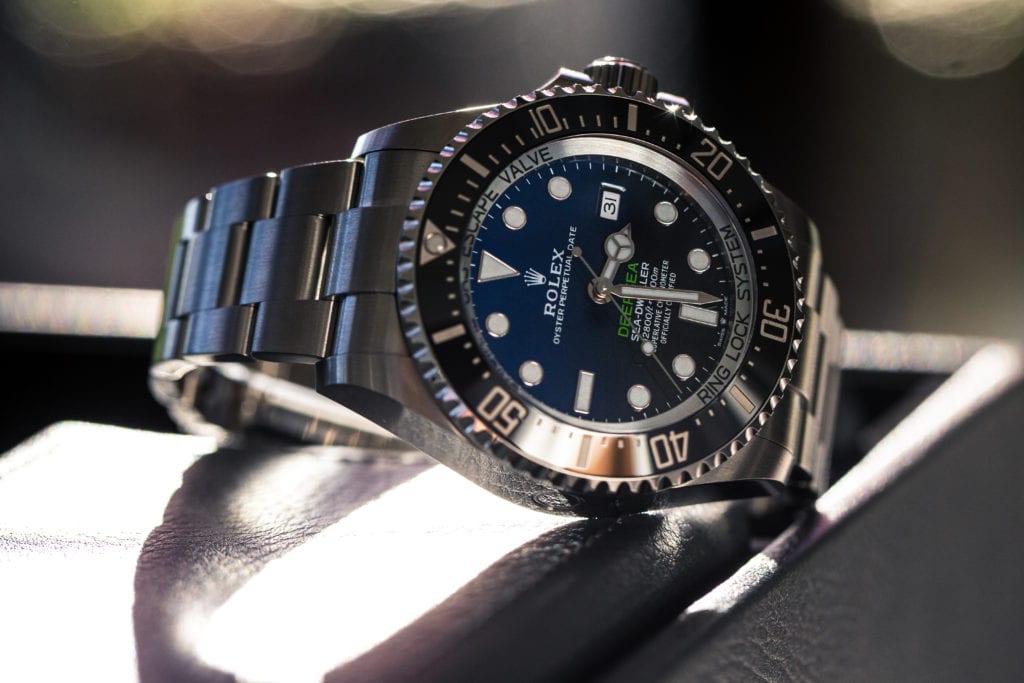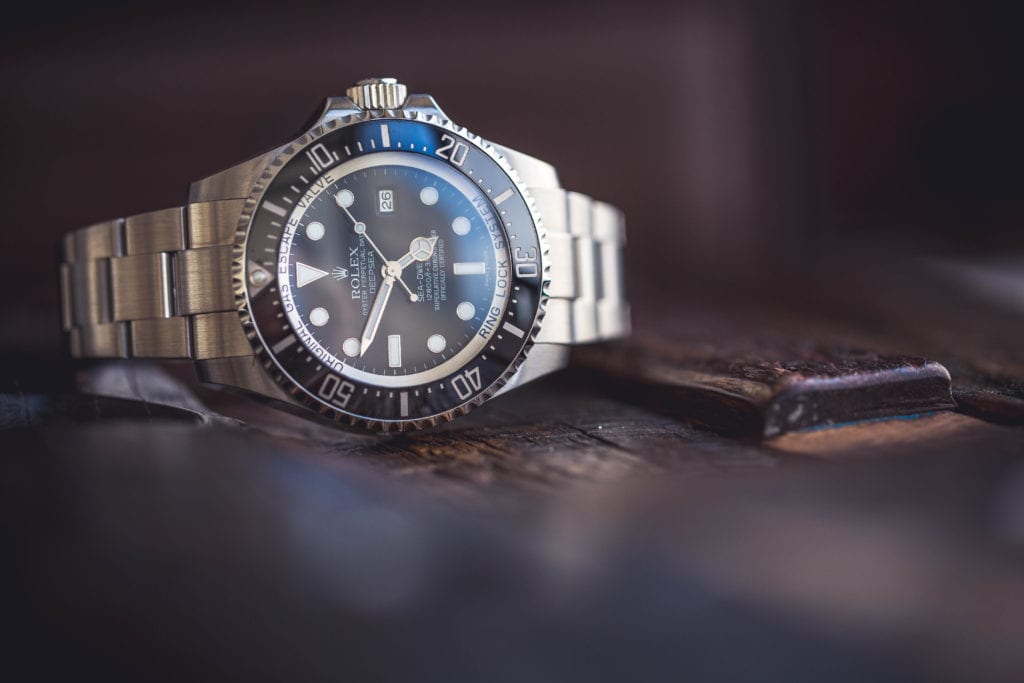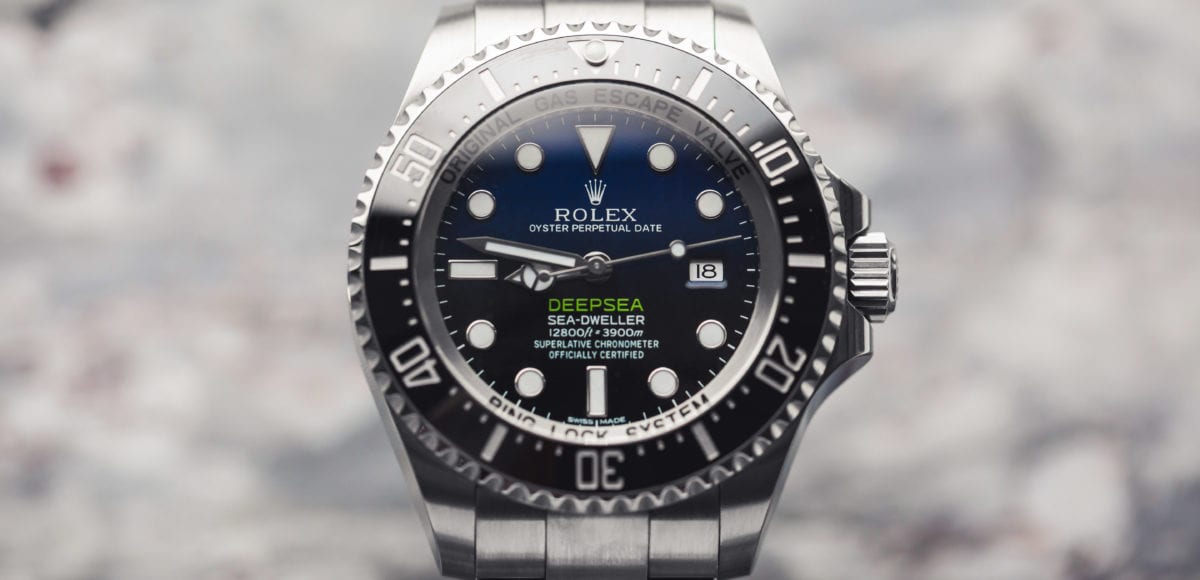Origins of the Ring Lock System
For more than four decades, the Sea-Dweller and Submariner served as Rolex’s collection of dive watches. While the Submariner continues to be a staple of the brand’s catalog, the reign of the Sea-Dweller ended in 2008. From it descended an all-new model with even more robust capabilities: the Deepsea. In several ways, the Deepsea closely resembles the Sea-Dweller. It comes equipped with a unidirectional rotating bezel featuring 60-minute graduations and Rolex’s patented helium escape valve. However, with the Deepsea, Rolex developed another one-of-a-kind patent, giving it incredible capabilities: the Ringlock system.
How Does it Work?

The Ringlock system is comprised of a single compression ring located between the dial and the crystal. What makes this ring so special and capable is its construction. Rolex uses a nitrogen-alloyed steel called BioDur 108, which is three times as strong as traditional stainless steel. As a diver descends to greater depths, the pressure increases on the crystal and caseback. This is because they make up the most surface area of the watch. For this reason, Rolex uses a thick, 5.5mm domed sapphire crystal coupled with a unique caseback consisting of two parts. Here, the brand employs a flexible, Grade 5 titanium alloy for the inner back. Then, they use their traditional Oystersteel for the outer screw-down caseback. The titanium alloy allows the back to be more flexible under pressure without cracking or becoming deformed. Still, it’s not enough. This is where the Ringlock system comes into play. Its makeup along with its strategic positioning allows it to take on that pressure as the crystal and caseback press together. Ultimately, it almost completely minimizes any strain on the watch case and important internal mechanisms.
Capabilities of the Ring Lock System

This innovative system allows the Deepsea to boast staggering depth ratings. While the Sea-Dweller was only able to reach depths up to around 1300 meters, the Deepsea offers three times that. The civilian Deepsea is water resistant up to 3900 meters. However, the technology of the model is scalable, and Rolex has made a special variation with even more impressive capabilities. In 2012, the brand partnered with the legendary James Cameron to create the Deepsea Challenge watch. Cameron tested the model as he descended to the ocean’s deepest point in the Mariana Trench. Here, he went 10,908 meters below the surface. This feat allowed the Deepsea Challenge set the record for the deepest dive for a wristwatch, and it performed successfully. For comparison, the civilian Deepsea measures 44mm wide and 17.7mm thick. On the other hand, the Deepsea Challenge measures 51.4mm wide and 28.5mm thick, with a sapphire crystal of over 14mm thick. The Deepsea Challenge certainly isn’t a practical watch, even for the most seasoned amateur or professional diver. Still, the fact that Rolex can scale this remarkable technology in this way proves the sky (or rather the sea) is the limit.
Get More Articles Like This in Your Inbox
We're constantly creating great content like this. So, why not get it delivered directly to your inbox? By subscribing you agree to our Privacy Policy but you can unsubscribe at any time.






